
Great Safaris Trip Itinerary for a Group Safari
Prepared By: Guillaume Van Wyk on Feb 6, 2025

Quick Summary
Itinerary Detail
Day 1: Arrive Nairobi, Kenya. Receive a warm welcome with a private transfer to the hotel



- Meet & Greet: Meet & Greet - Kenya
- Land Transfers: Private transfer to the hotel
- City: Nairobi
- Accommodation: Eka Hotel - Superior Room
Meet & Greet - Kenya
Your exciting adventure begins today, as you touch down in Kenya. Upon arrival you will be met and greeted by our representative and assisted to your next service.
Private transfer to the hotel
Nairobi
East Africa's most cosmopolitan city, Nairobi is Kenya's beating heart, an exciting, frenetic concrete jungle that counterpoints the untrammeled natural beauty to be found elsewhere in the country.
If you're interested in learning about Kenya's culture and history, the city is home to a number of great stops including the extensive National Museum, and it's also a great jumping off point for diving into the country's varied culinary traditions. Nairobi also harbors a thrumming nightlife scene and an established café culture. And, believe it or not, the city has its own wildlife attractions, with a fabulous national park on its doorstep and several reserves dedicated to the wellbeing of elephants, giraffes, rhinos and more. With so many activities woven into its urban web, Nairobi will often come as a pleasant surprise.
Day 2: Visit the Giraffe Centre in the morning where you can handfed the giraffe, and the Daphne Sheldrick Animal Orphanage meeting the elephants and learn more about this successful conservation program

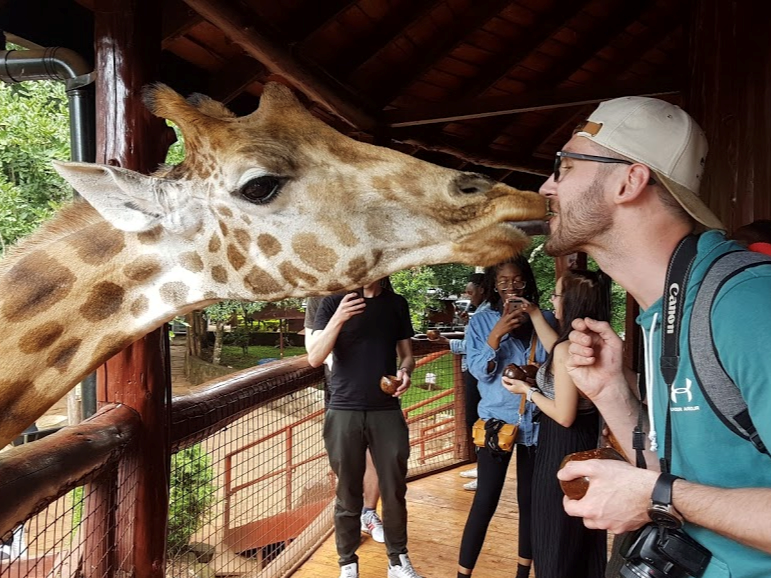




- Activities: Giraffe Centre
- Activities: Daphne Sheldrick Animal Orphanage
- Activities: Carnivore Restaurant
- Accommodation: Eka Hotel - Superior Room
- Meals: B, L, D
Giraffe Centre
The Giraffe Centre is home of the endangered Rothschild Giraffe and the Centre allows one to feed the Giraffes - a truly awesome experience. Attend a short lecture to learn how and why the Centre is taking care of these amazing animals. Leave with a whole lot more knowledge about wildlife in Kenya.
History of the Giraffe Centre: The Africa Fund for Endangered Wildlife (A.F.E.W.) Kenya was founded in 1979 by the late Jock Leslie-Melville, a Kenyan citizen of British descent, and his American-born wife, Betty Leslie-Melville. They began the Giraffe Centre after discovering the sad plight of the Rothschild Giraffe. A subspecies of the giraffe found only in the grasslands of East Africa.
The Giraffe Centre has also become world-famous as a Nature Education Centre, educating thousands of Kenyan school children every year.
At the time, the animals had lost their habitat in Western Kenya, with only 130 of them left on the 18,000-acre Soy Ranch that was being sub-divided to resettle squatters. Their first effort to save the subspecies was to bring two young giraffes, Daisy and Marlon, to their home in the Lang’ata suburb, southwest of Nairobi. Here they raised the calves and started a programme of breeding giraffe in captivity. This is where the Centre remains to date.
Betty and Jock then registered A.F.E.W. in the United States. Funds were raised to move five other groups of giraffe to different safe areas. Breeding herds of 26 giraffes were translocated from Soy Ranch to the Ruma Game Reserve in present-day Homa Bay County, Lake Nakuru National Park in Nakuru and Nasolot Game Reserve in modern-day West Pokot County. In 1985, seven giraffes were introduced to Yodder Flower Farm near the Mwea Game Reserve in Mbeere District in Eastern Kenya.
In 1983, funds raised by A.F.E.W. USA helped build the Educational Centre on a 60-acre sanctuary. This with the extraordinary vision of creating an educational institution in conjunction with rescuing the giraffe. The Giraffe Centre opened its doors to the general public and students the same year, receiving over 800 excited students.
There are now over 300 Rothschild Giraffe safe and breeding well in various Kenyan national parks. Recent herds have been introduced to Soysambu Ranch by Lake Elementaita in the Great Rift Valley, Kigio Conservancy and the Sergoit Ranch in the Mount Elgon region.
Daphne Sheldrick Animal Orphanage
The David Sheldrick Wildlife Trust, is located in a secluded area of the nearby Nairobi National Park. Orphaned baby elephants and other animals are taken care of by a dedicated team of conservationists. The orphanage is run by Angela Sheldrick, the daughter of the late famous Naturalist, David William Sheldrick who was the founder Warden of Tsavo East National Park in Kenya and his wife, the late Dame Daphne Sheldrick.
The baby animals are brought from the National Park for a mud-bath at the orphanage, where for an hour you can get close to them, touch and feed them. In addition, there is a keeper who will give a talk about the elephants, where they came from, how they are getting on, and how some of the previous orphans are progressing. The orphanage also takes in rhinos and so if you are lucky you will get the chance to see a young rhino.
To date the David Sheldrick Wildlife Trust has successfully hand-raised over 263 orphaned elephants and has accomplished its long-term conservation priority by effectively reintegrating orphans back into the wild herds of Tsavo, claiming many healthy wild-born calves from former-orphaned elephants raised in their care.
Rescued elephants, rhinos and giraffes can be adopted; it takes as little as $50 a year and as foster parents, you receive a personalized adoption certificate, a monthly email update on your orphan and access to the latest Keepers’ diaries, videos and photos. You can also help by picking up a souvenir (or two or three) from the gift shop.
Carnivore Restaurant
Dining at Carnivore Restaurant is not for the light eater, but rather an indulgent “Nyama Choma” dining venue where you sample an abundance of varied juicy meats roasted over a charcoal fire that are piled on your plate until your stomach is beyond full. When the meat has reached a perfect temperature, waiters carry the full skewers through the restaurant, and the aromas tempt your taste buds and stir your curiosity.
Since 1980, Carnivore Restaurant has been satisfying the appetites of meat lovers and safari adventurers with a never-ending selection of ostrich, crocodile, venison depending on what is locally available, served alongside beef, lamb, pork and chicken. A variety of side dishes complete this gastronomical tour of African cuisine, such as salads, soups, vegetable dishes and authentic sauces. The experience is enhanced by the informal, relaxed setting while gulping a Carnivore Dawa cocktail to hydrate, refresh and sharpen your palate for every delicious morsel.
Should you find that even one more nibble is simply unbearable, just lower the white flag in the middle of your table and your surrender is noted with a final edible bite of dessert served with coffee or tea. More than two million international guests have shared in what is known as “the ultimate Beast of a Feast,” and the restaurant has been lauded in varied international culinary and dining publications and TV shows. AfricanMecca offers this dining experience as a lunch or dinner option along with a hotel pickup and drop off service.
Day 3: Enjoy a scenic drive to Amboseli National Park. Lunch at the lodge and go on an afternoon game drive with Mt Kilimanjaro in the background

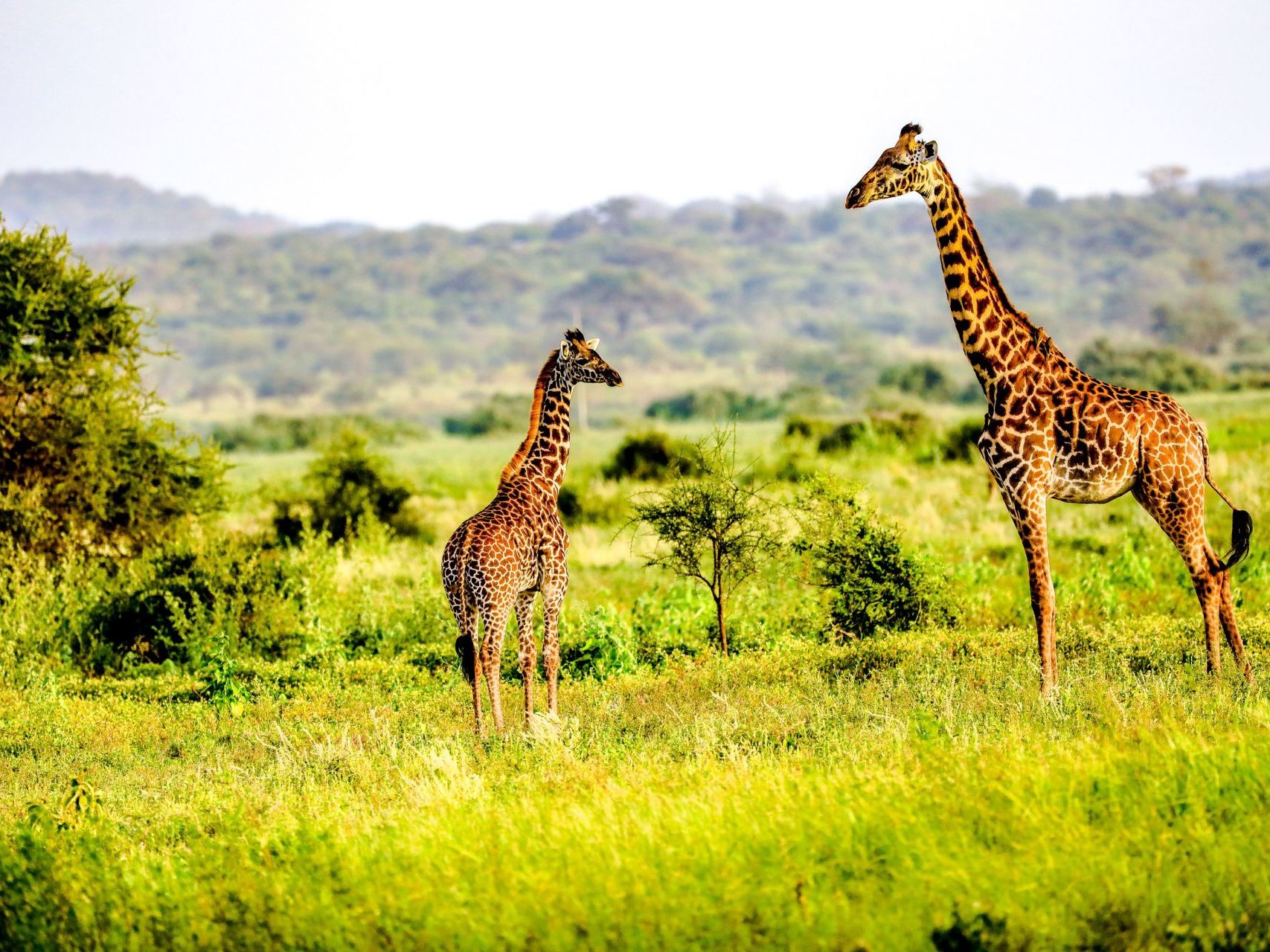



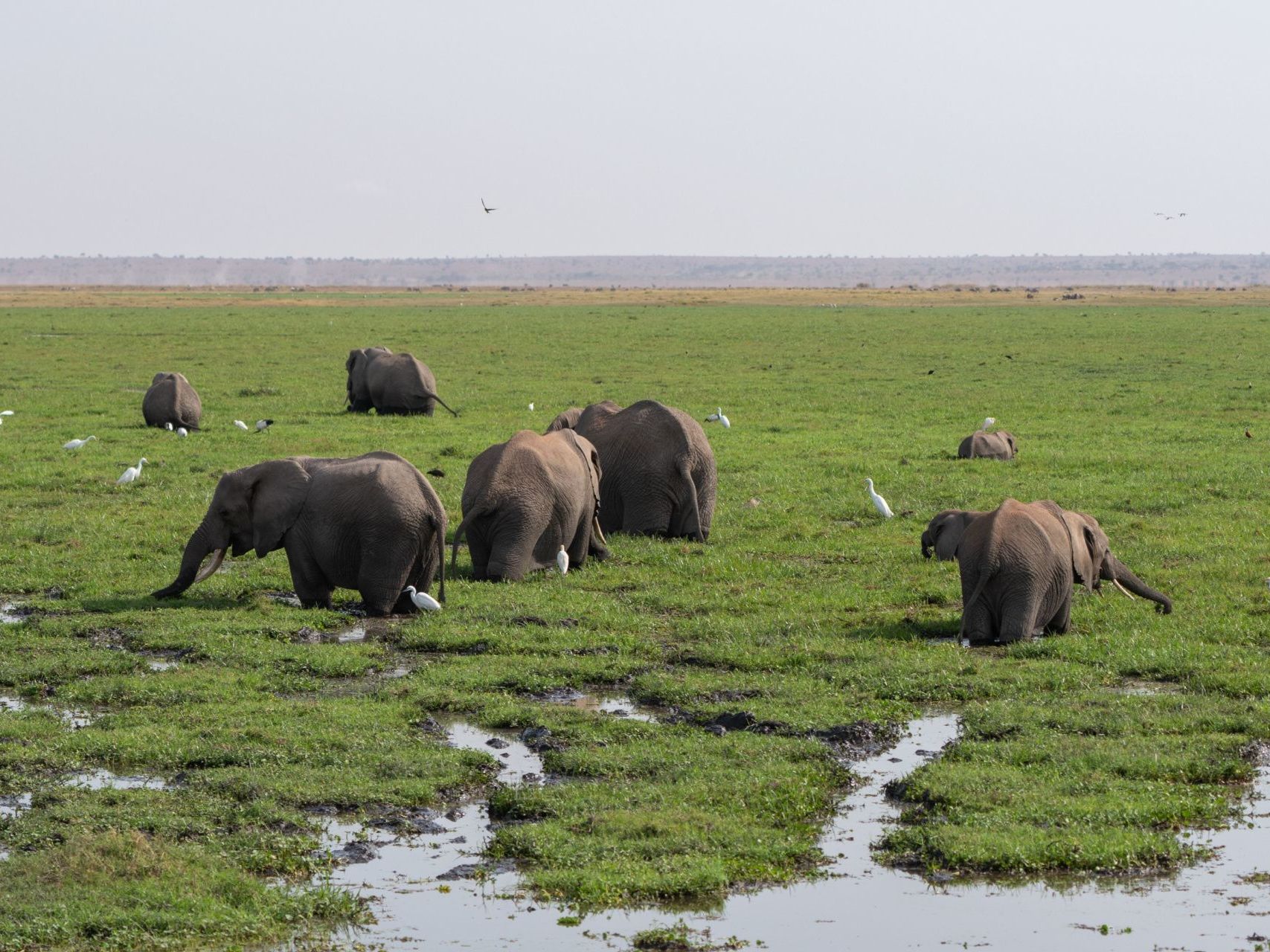
- Land Transfers: Land transfer from Nairobi to Amboseli National Park
- Game Drive: Game Drives in Amboseli National Park
- Activities: Amboseli National Park
- Accommodation: Ol Tukai Lodge - Standard Room
- Meals: B, L, D
Land transfer from Nairobi to Amboseli National Park
Game Drives in Amboseli National Park
Amboseli national park the magical land of Kenya lies in the North West direction of Mount Kilimanjaro on the border of Kenya and Tanzania, this park stretches over the area of 392 square kilometers which is dominated by acacia woodland, rocky thorny bush, swamps marshland and a Pleistocene lake. Amboseli national park is a home to a large concentration of wildlife estimated to be 80 different species including African elephant, African buffalo, impalas, lion, zebra, and wildebeest among other African animals, among the animals the park is more famous for habiting a large population of elephants. Amboseli park is also a home to a number of birds estimated to be 400 species which include African swamp hen, Common redshank, Dickinson’s kestrel, Eurasian thick-knee, Greater flamingo, Hartlaub’s bustard, Lesser flamingo, Long-toed lapwing, Pangani longclaw, Rufous chatterer, Rufous-bellied heron, Spike-heeled lark, Steel-blue whydah, Taveta golden weaver, Von der Decken’s hornbill, Yellow-necked spurfowl and many more.
Amboseli National Park
“Home of the African Elephant” Crowned by Mount Kilimanjaro, Africa's highest peak, the Amboseli National Parks is one of Kenya's most popular parks. The name "Amboseli" comes from a Maasai word meaning "salty dust". Amboseli National Park is in southern Kenya. It’s known for its large elephant herds and views of immense Mount Kilimanjaro, across the border in Tanzania. Observation Hill offers panoramas of the peak and the park’s plains and swamps. Varied wildlife includes giraffes, zebras, cheetahs and hundreds of bird species. The western section is dominated by vast Lake Amboseli, which is dry outside the rainy season.
Although Mount Kilimanjaro is actually in neighbouring Tanzania, the best views of the world’s tallest free-standing mountain and Africa’s highest peak are in Kenya. Because of its proximity to the Tanzanian border, Amboseli does have the best vistas of Mt Kilimanjaro. Standing tall at 19 341 feet high, the summit is almost always swathed in cloud. Your best chance of seeing the peak is at dawn when conditions may have cleared overnight so don’t skip the early-morning game drives!
Day 4: Drive through Amboseli with game view on route to the border. Clear customs and immigrations into Tanzania, lunch in Arusha and continue to Tarangire National Park with game viewing on route again

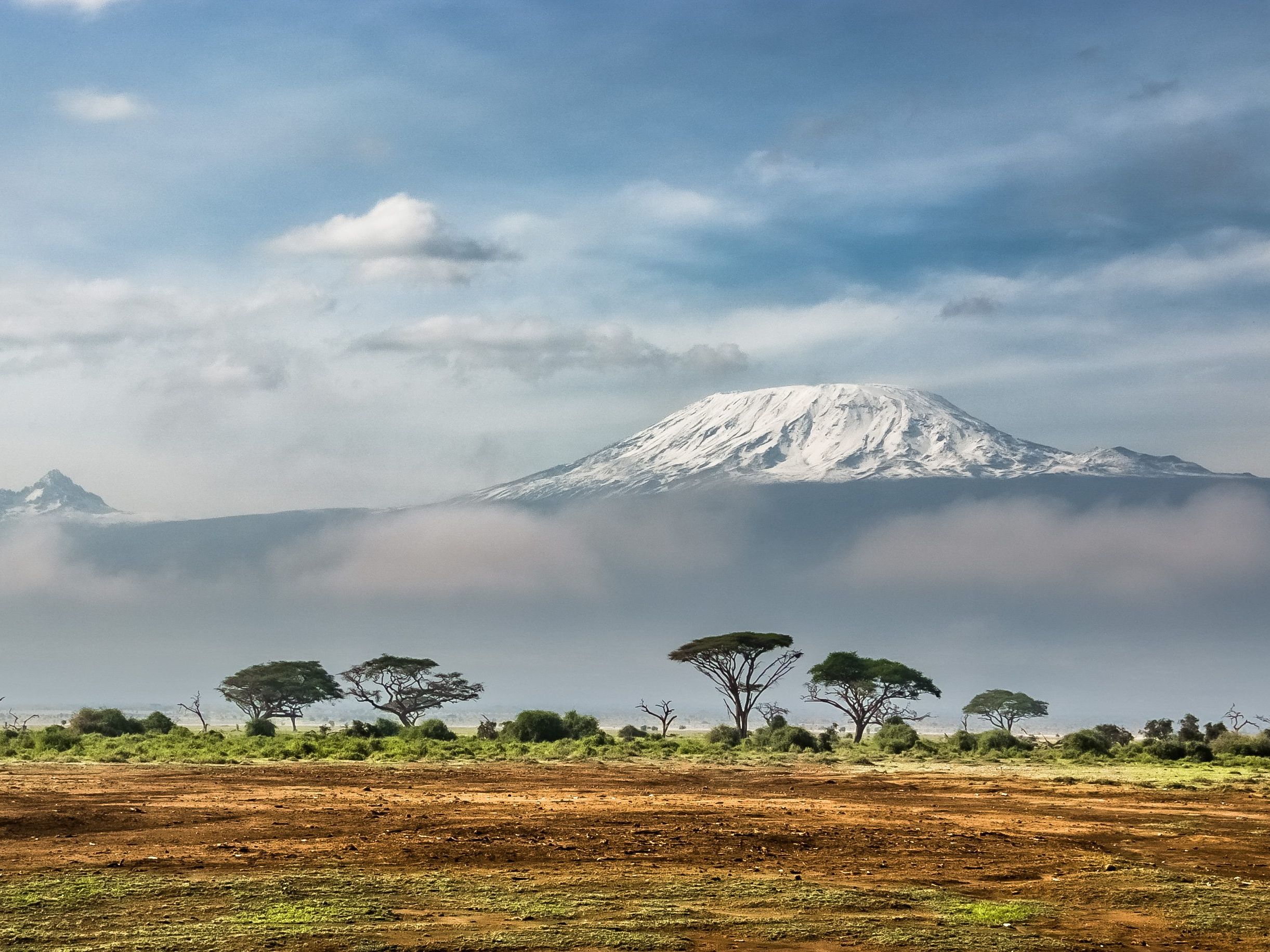

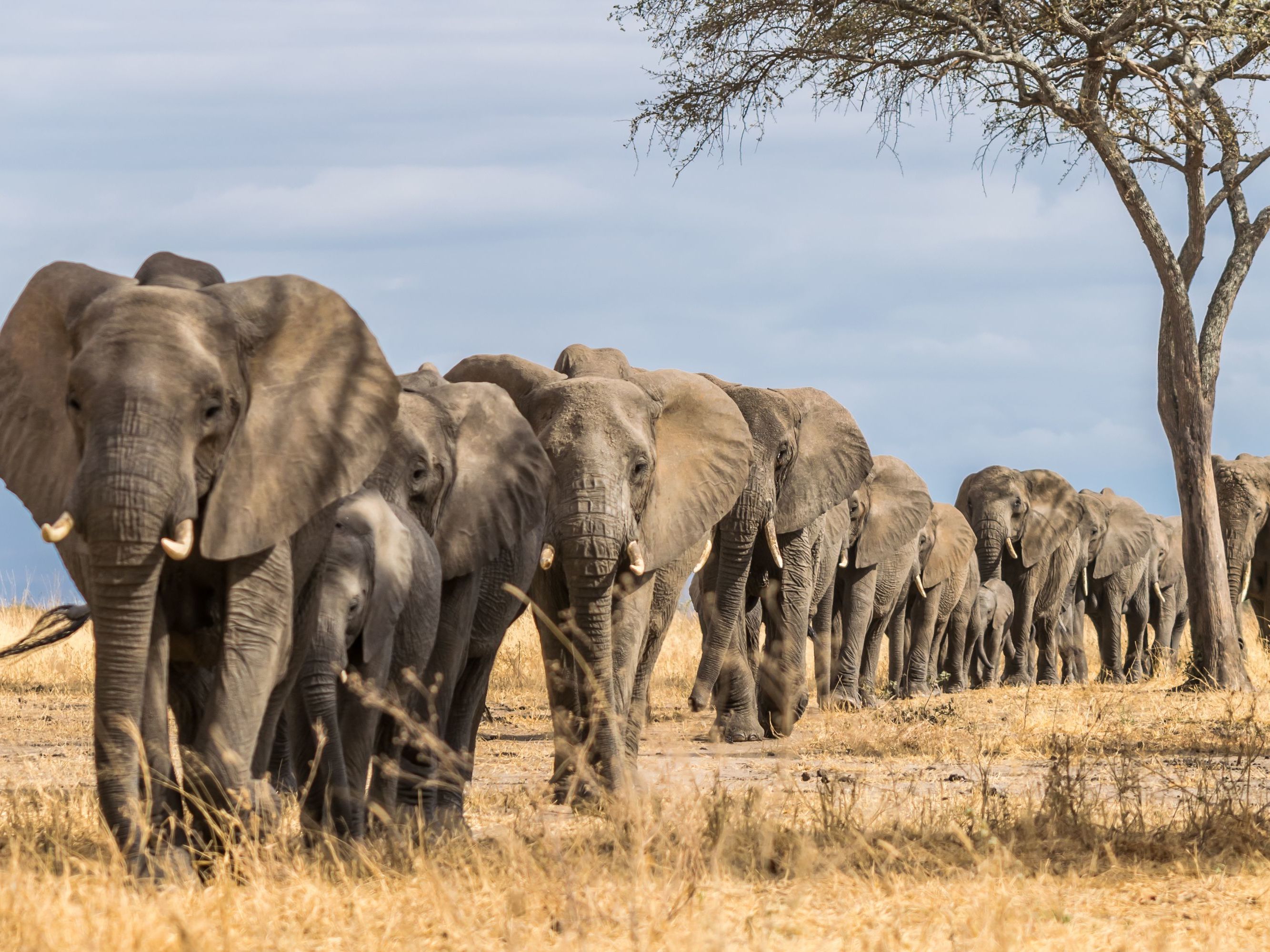


- Land Transfers: Land transfer from Amboseli to Arusha
- Land Transfers: Land Transfer from Arusha to Tarangire National Park
- City: Arusha
- Activities: Tarangire National Park
- Accommodation: Tarangire Mbali Mbali Camp - Safari Tent
- Meals: B, L, D
Land transfer from Amboseli to Arusha
Land Transfer from Arusha to Tarangire National Park
Arusha
Arusha is Tanzania's gateway to the northern circuit of stellar national parks and the starting point of a memorable safari. Located below Mount Meru on the eastern edge of the eastern branch of the Great Rift Valley, Arusha City has a temperate climate. The city is close to the Serengeti National Park, the Ngorongoro Conservation Area, Lake Manyara National Park, Olduvai Gorge, Tarangire National Park, Mount Kilimanjaro, and Mount Meru in the Arusha National Park.
It's also a large, sprawling city with vibrant markets that sell everything from meat and fish to fabrics and electronics, curios and African art by local artists. They are crowded and busy but a great way to experience 'local' Africa. Arusha is also considered an international diplomatic hub. It is home to the East African Community, and is set to be the capital city of the proposed East African federation. Arusha is home to many industries and business sectors, including banking, manufacturing, and tourism.
Tarangire National Park
Welcome to one of Africa's most underrated parks. Thanks to its proximity to Serengeti National Park and Ngorongoro Crater, Tarangire National Park is usually assigned only a day visit as part of a larger northern-circuit itinerary. Yet it deserves much more. It is a place where elephants dot the plains like cattle, and where lion roars and zebra barks fill the night.
But here the wildlife tells only half the story. Dominating the park's 2850 sq km, Tarangire's great stands of epic baobabs should be reason enough to visit. There are also sun-blistered termite mounds in abundance, as well as grassy savannah plains and vast swamps. And cleaving the park in two is the Tarangire River, its meandering course and (in some places) steep banks providing a dry-season lure for animals and thus many stirring wildlife encounters for visitors.
Day 5: Morning and afternoon game drives in Tarangire National Park

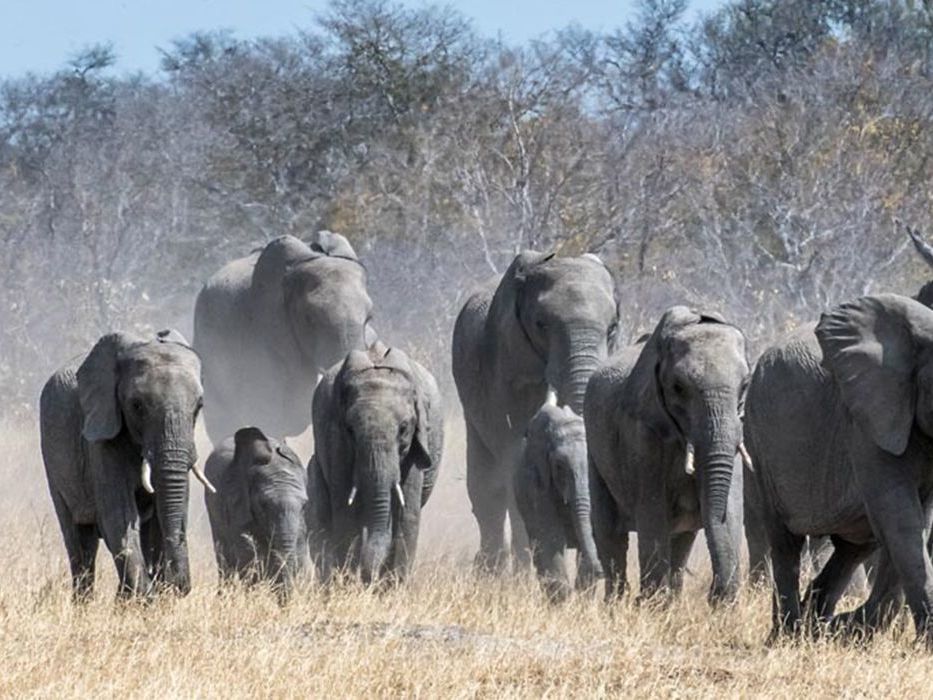
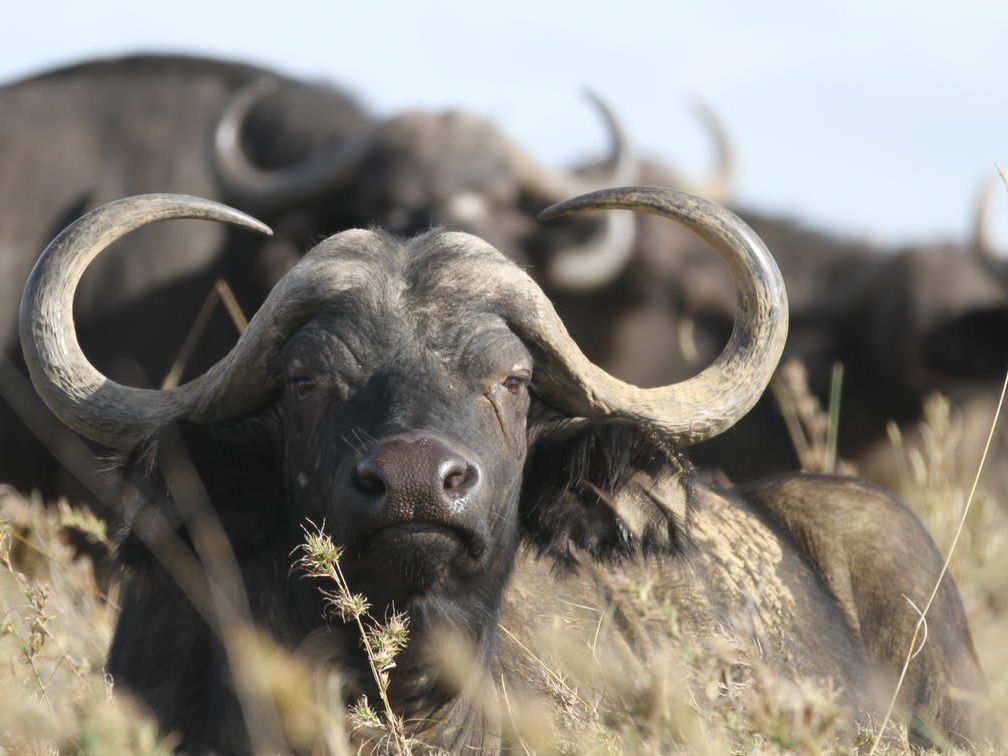
- Game Drive: Game Drives in Tarangire National Park
- Accommodation: Tarangire Mbali Mbali Camp - Safari Tent
- Meals: B, L, D
Game Drives in Tarangire National Park
Morning and afternoon game drives are conducted in a 4x4 customized game viewing vehicle with a professional driver - guide. Tarangire is an elephant enthusiast's paradise with up to 6,000 roaming the park. It is impossible to spend time in the park without encountering these iconic animals, feeding at the base of a baobab, strolling through the riverine forests or 'playing' in the mud of the marshlands. They are often present in a conglomeration of herds that could be 300 individuals - an incredible sight for even the most seasoned safari-goer.
Elephants aside, Tarangire is home to one of the greatest concentration of wildlife outside of the larger Serengeti ecosystem. They dry season influx of ungulates sees a profusion of wildebeest, zebra, gazelle, eland, hartebeest and buffalo assembled near the river, or around residual pools in the swamps. Such a conservation of prey serves to attract the attention of the park's various resident predators, particularly the ever-attended lions. The lions of the Silale Swamps are particularly renowned, not only for their marshy hunting techniques, but also for their habit of lounging in the boughs of trees. Leopards and cheetah are also present, and even the highly endangered African wildlife dog. Away from the wetter areas of the park, one might be fortunate enough to spot a gerenuk or fringe-eared oryx, making Taranigire one of the few places in Tanzania to see these arid species.
Day 6: Travel to Lake Manyara Park with a game drive in search of its famous tree climbing lions - enjoy a picnic lunch in the park
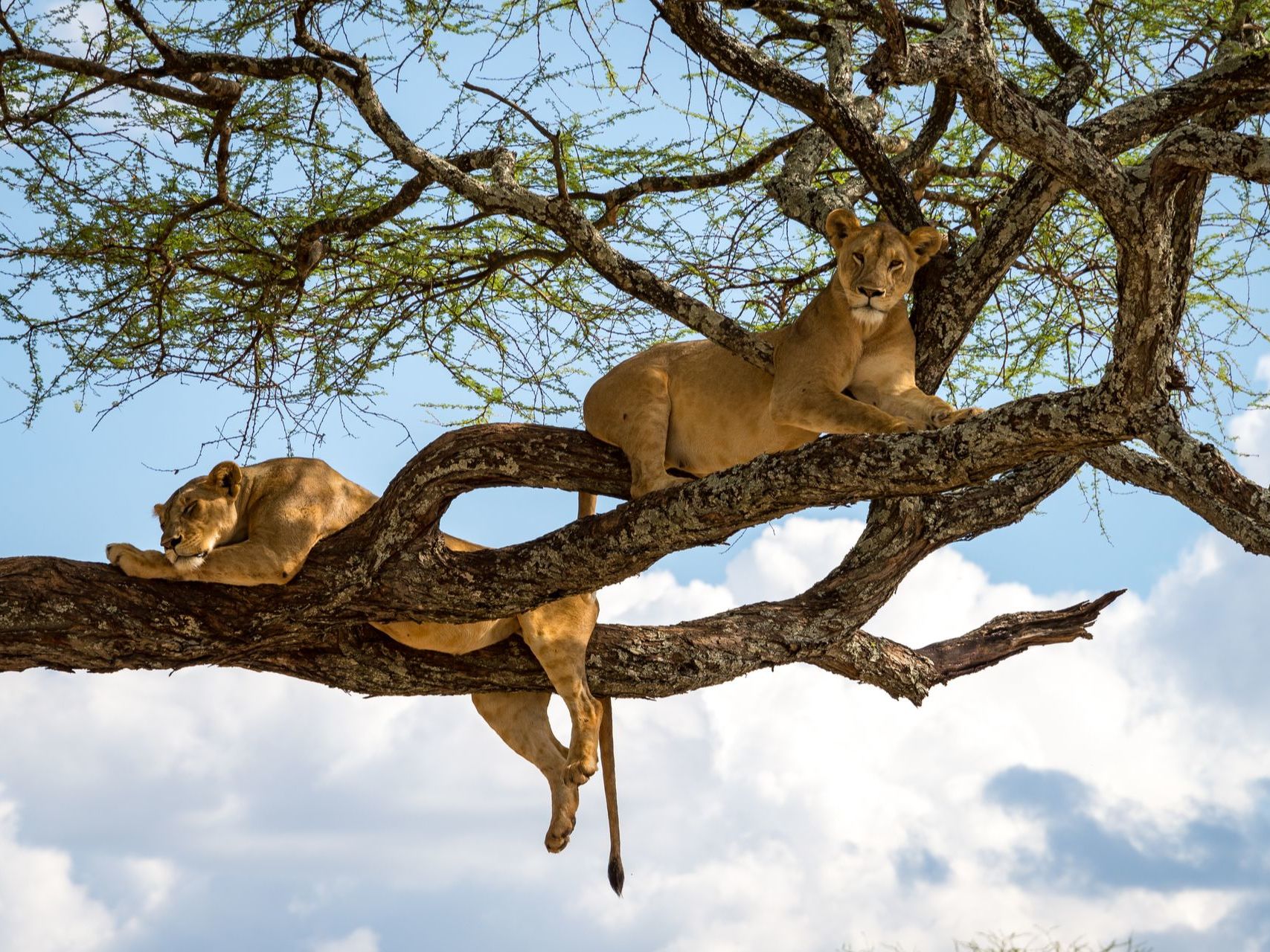
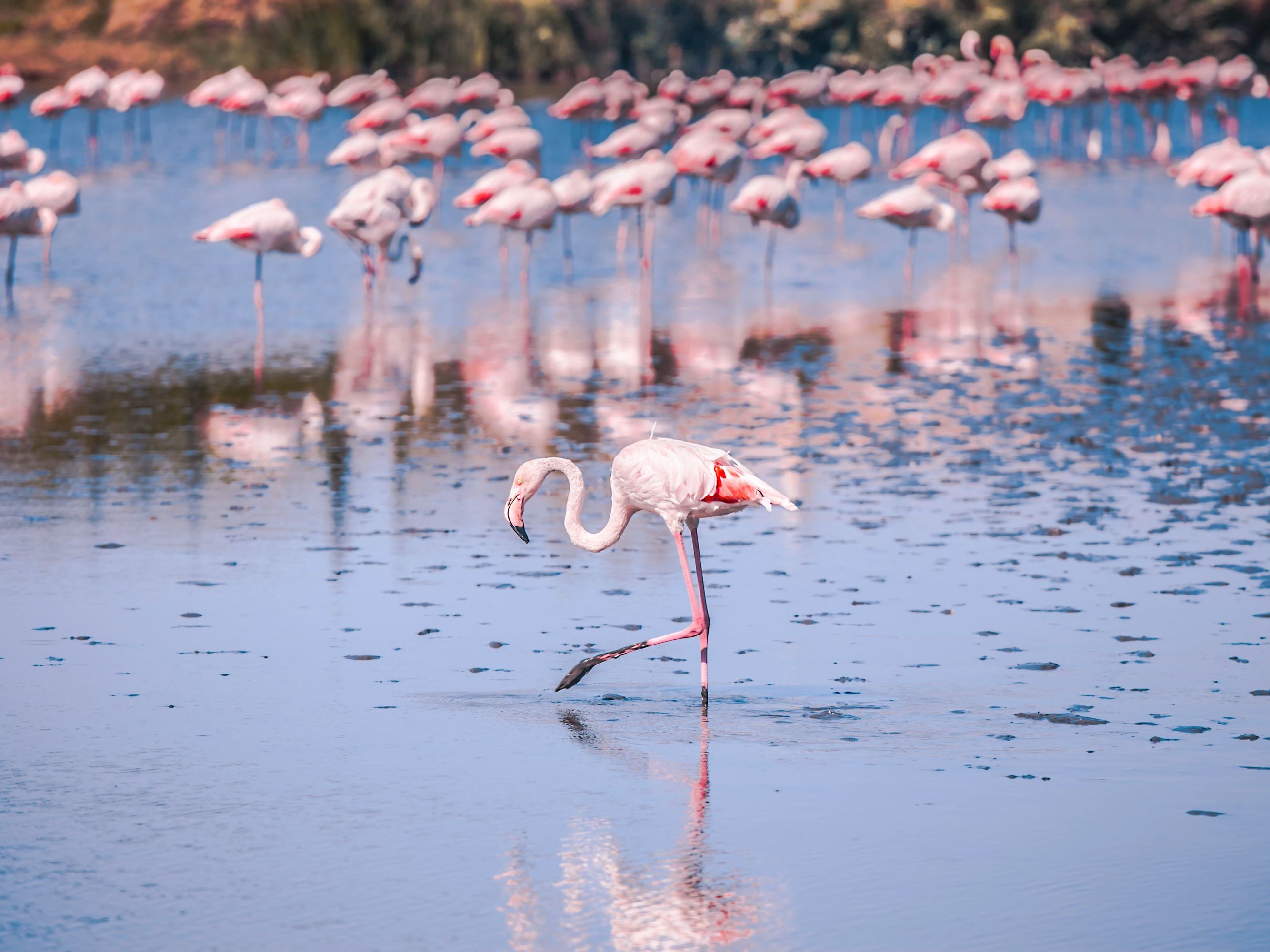

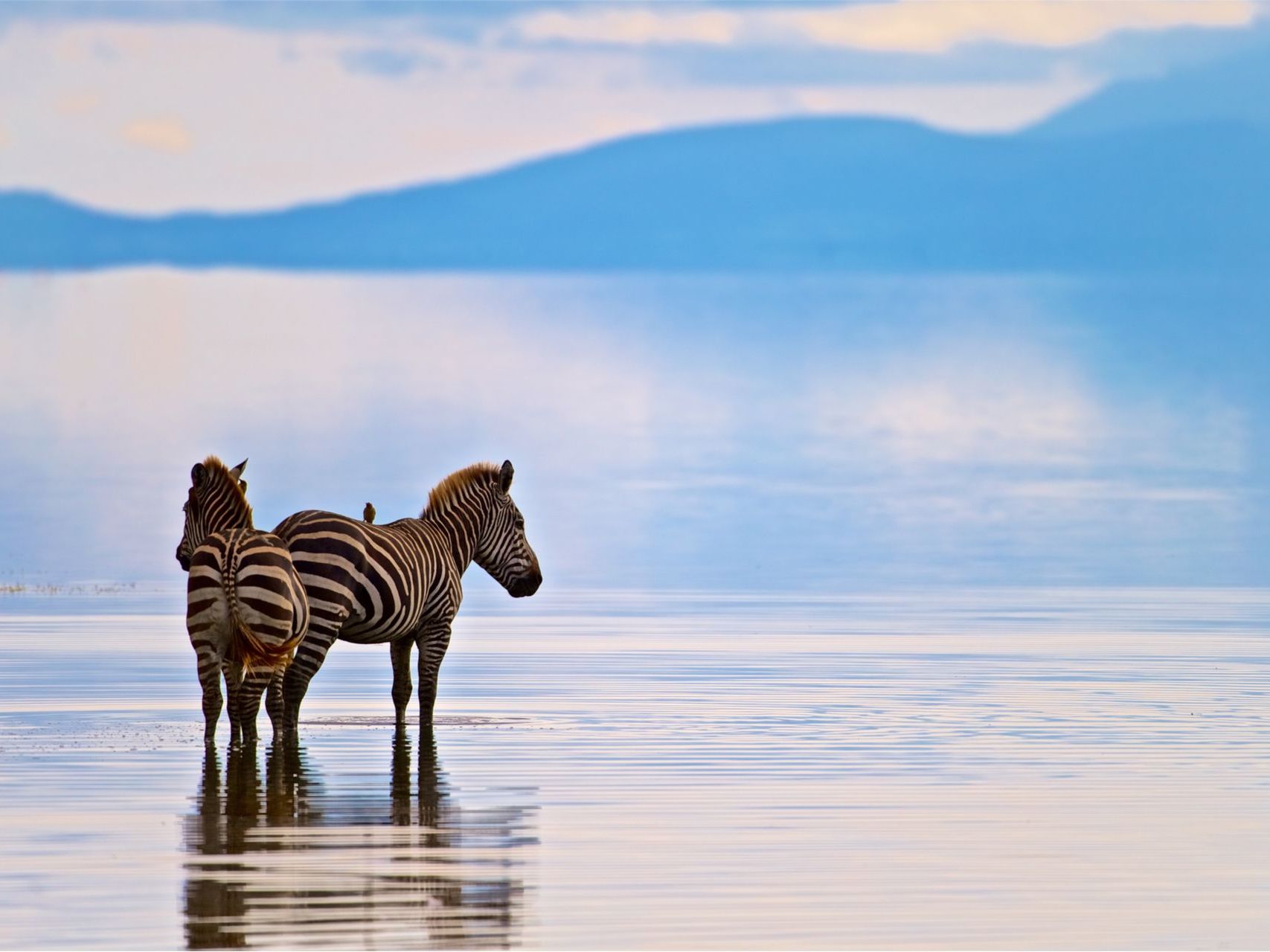
- Land Transfers: Land transfer from Tarangire National Park to Lake Manyara National Park
- Activities: Game drives in Lake Manyara National Park
- Land Transfers: Land transfer from Lake Manyara to Ngorongoro Conservation Area
- Accommodation: Ngorongoro Serena Lodge - Standard Room
- Meals: B, L, D
Land transfer from Tarangire National Park to Lake Manyara National Park
Game drives in Lake Manyara National Park
Welcome to Lake Manyara National Park, famous for its tree climbing lions. One of the small parks in Tanzania with an exceptional diverse vegetation ranging from savannah to marsh to evergreen forest, a total of 11 ecosystems. The chance to see elephant families moving through the forest or Lake Manyara's famous population of tree-climbing lions are alone reason enough to come. Lake Manyara also provides the perfect introduction to Tanzania’s birdlife with more than 400 species have been recorded to date, which include pink-hued flamingos (by the thousands during migration), as well as other large water-birds such as pelicans, cormorants and storks. The dramatic western escarpment of the Rift Valley forms the park’s western border. To the east is the alkaline Lake Manyara, which covers one-third of the park but shrinks considerably in the dry season. During the rains, the lake hosts millions of flamingos and other bird life.
Land transfer from Lake Manyara to Ngorongoro Conservation Area
Day 7: Full day game drive on the Ngorongoro crater floor - home to 25,000 resident animals and the BIG 5



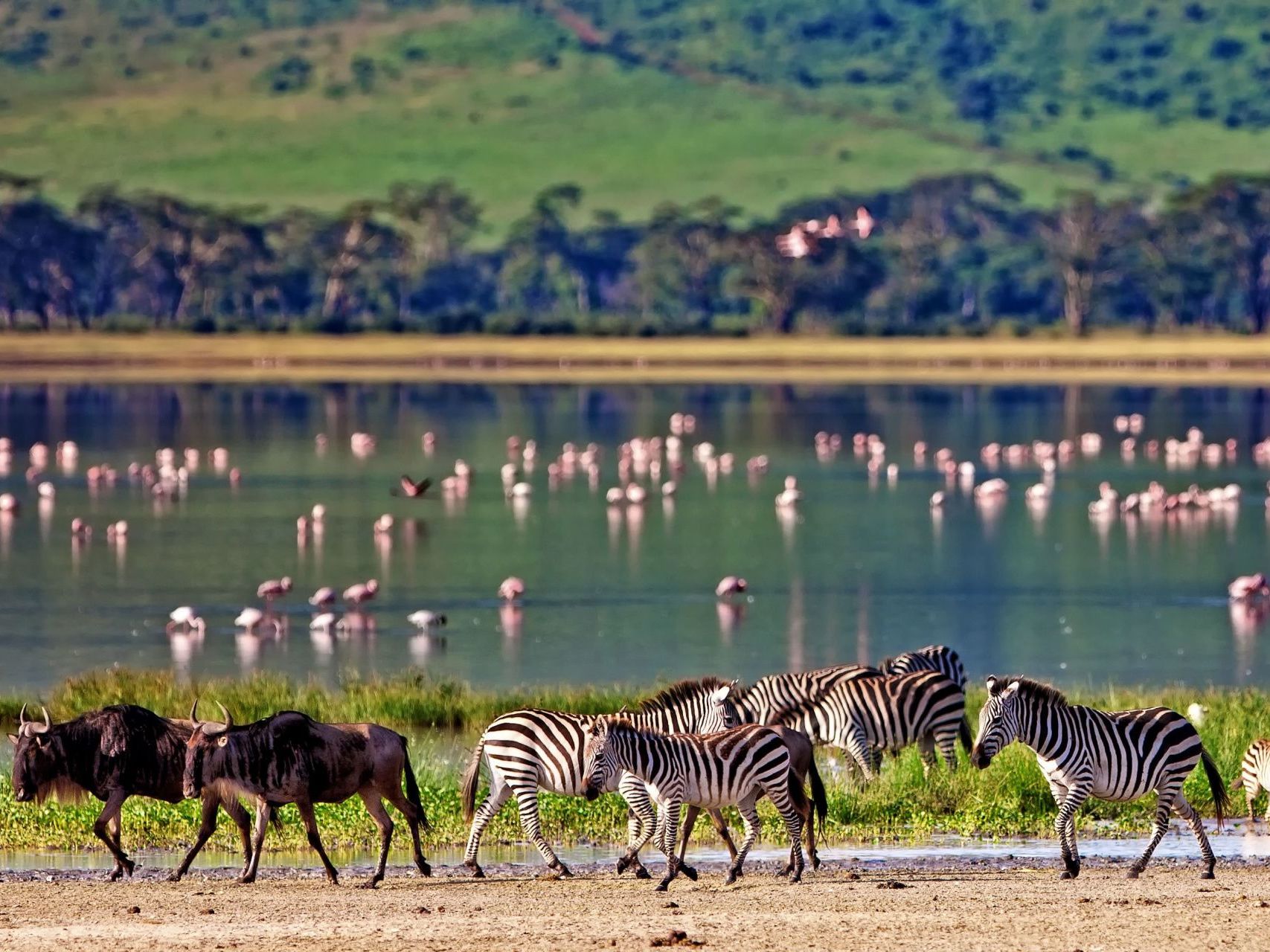

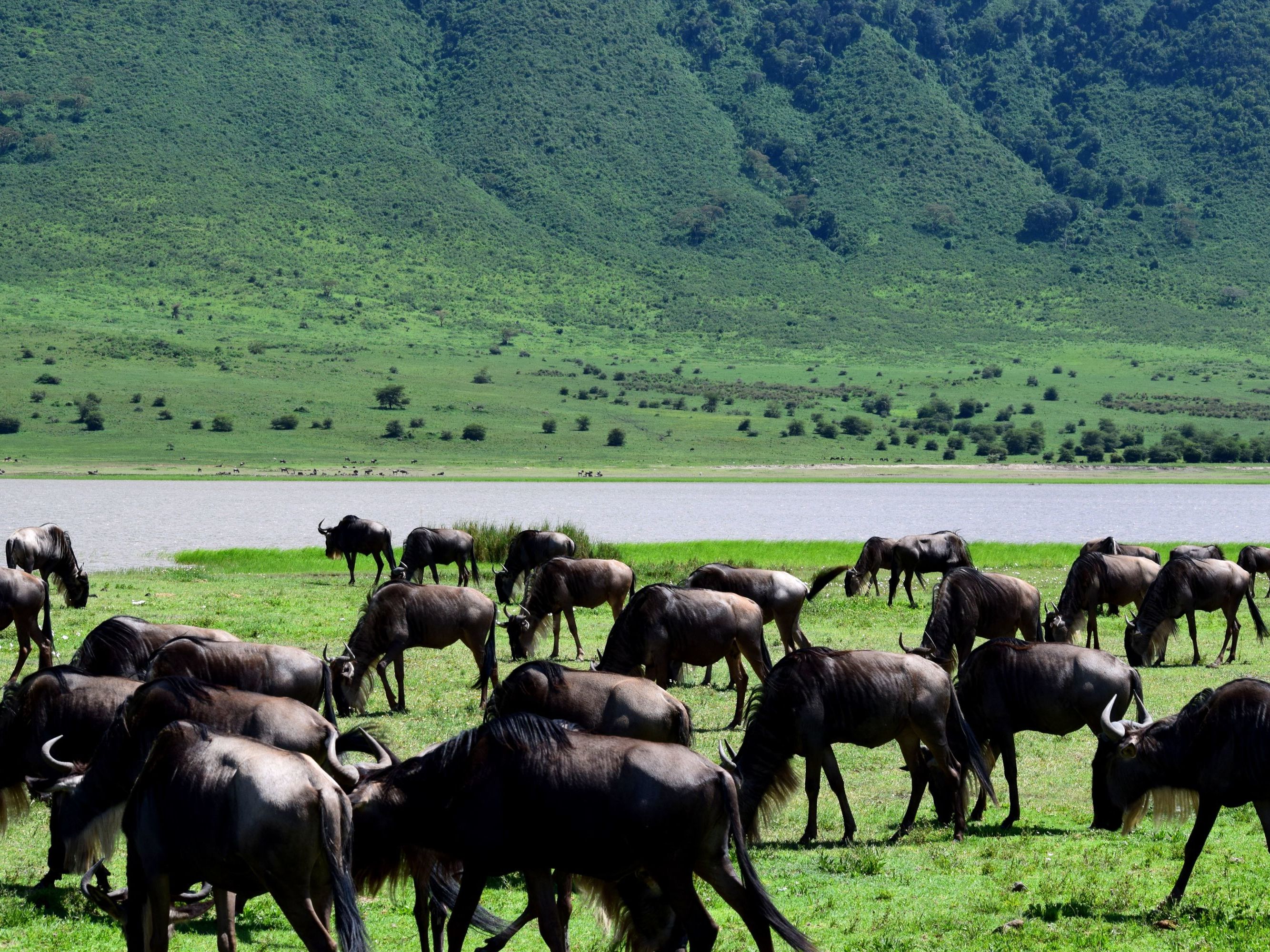
- Game Drive: Game drives in Ngorongoro Crater
- Activities: Ngorongoro Crater & Conservation Area
- Accommodation: Ngorongoro Serena Lodge - Standard Room
- Meals: B, L, D
Game drives in Ngorongoro Crater
Game drives descend into the Ngorongoro Crater through a lush highland forest, with magnificent birdlife to be spotted among the different tree species. Once on the grassy crater floor, you may discover a large variety of grazing herbivores, up to 25,000 animals, as well as the predators that are attracted by this abundant supply of prey. Depending on the time of year, you may see huge flocks of pink flamingo around the shores of the shallow Lake Magadi, while the surrounding swamp is inhabited by hippo. Safari vehicles are closed, with glass windows and a pop-up roof.
The crater has formed its own ecosystem due to its enclosed nature, and is one place where you can certainly tick all the boxes. Lerai Forest comprised of yellow fever trees and Lake Magadi, a shallow soda lake. Roam to the east and you will find Gorigor Swamp and the Ngoitokitok Springs where happy pods of hippo can be found. The north of the Crater is where the bulk of the resident game resides thanks to the drier, open grasslands.
Ngorongoro Crater & Conservation Area
Ngorongoro Crater is an extinct volcanic caldera in the Eastern Great Rift Valley, northern Tanzania. The caldera measures between 10 and 12 miles across and has an area of 102 square miles. Its heavily forested rim rises 2,000 feet above the caldera’s floor to an elevation of 7,500 feet. Ngorongoro is thought to have formed about 2.5 million years ago from a large active volcano whose cone collapsed inward after a major eruption, leaving the present vast, unbroken caldera as its chief remnant.
The caldera’s floor is predominantly open grassland. It is home to a diverse array of animals including elephants, black rhinoceroses, leopards, buffalo, zebras, warthogs, gnu (wildebeests), Grant’s and Thomson’s gazelles, and the densest population of lions in the world. The local Masai people also graze their livestock in the crater. Lake Magadi, a shallow soda lake ringed by extinct volcanoes, is renowned as a habitat for great flocks of pink flamingos.
Day 8: Fly this morning to north Serengeti. Settle in, enjoy lunch and go on an afternoon game drive



- Activities: Internal flight from Ngorongoro to Serengeti
- Activities: Serengeti National Park
- Accommodation: Serengeti Nyikani Migration Camp - Tented Room
- Meals: B, L, D
*** Auric Air Scheduled flight to Serengeti (flight included)
Internal flight from Ngorongoro to Serengeti
Serengeti National Park
The Serengeti National Park is partly adjacent to the Kenya border and northwest of the adjoining Ngorongoro Conservation Area. It is best known for its huge herds of plains animals, especially wildebeest, gazelles, and zebras and it is the only place in Africa where vast land-animal migrations still take place. The park, an international tourist attraction, was added to the UNESCO World Heritage List in 1981.
The park was established in 1951 and covers 5,700 square miles with some of the best grassland range in Africa, as well as extensive acacia woodland savanna. With elevations ranging from 3,020 to 6,070 feet, the park extends 100 miles southeast from points near the shores of Lake Victoria and, in its eastern portion, 100 miles south from the Kenya-Tanzania border. During the wet season, from November to May, the herds graze in the southeastern plains within the park, with the calving season peaking around February when up to 8,000 calves are born daily for nearly two months. Early June one major group of animals moves west into the park’s woodland savanna and then north into the grasslands just beyond the Kenya-Tanzania border, an area known as the Masai Mara National Reserve, and another group migrates directly northward. The herds return to the Serengeti southeastern plains in November, at the end of the dry season.
Days 9 - 10: Morning and afternoon game drives in Serengeti National Park exploring its vast plains with the option of a hot air balloon safari
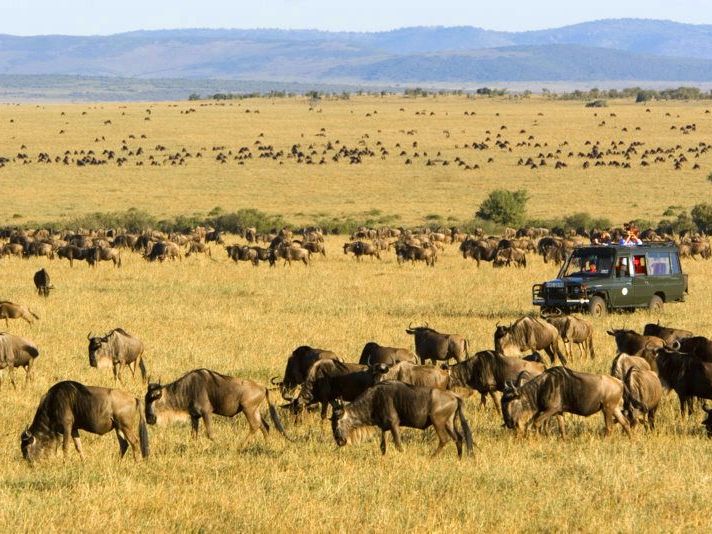



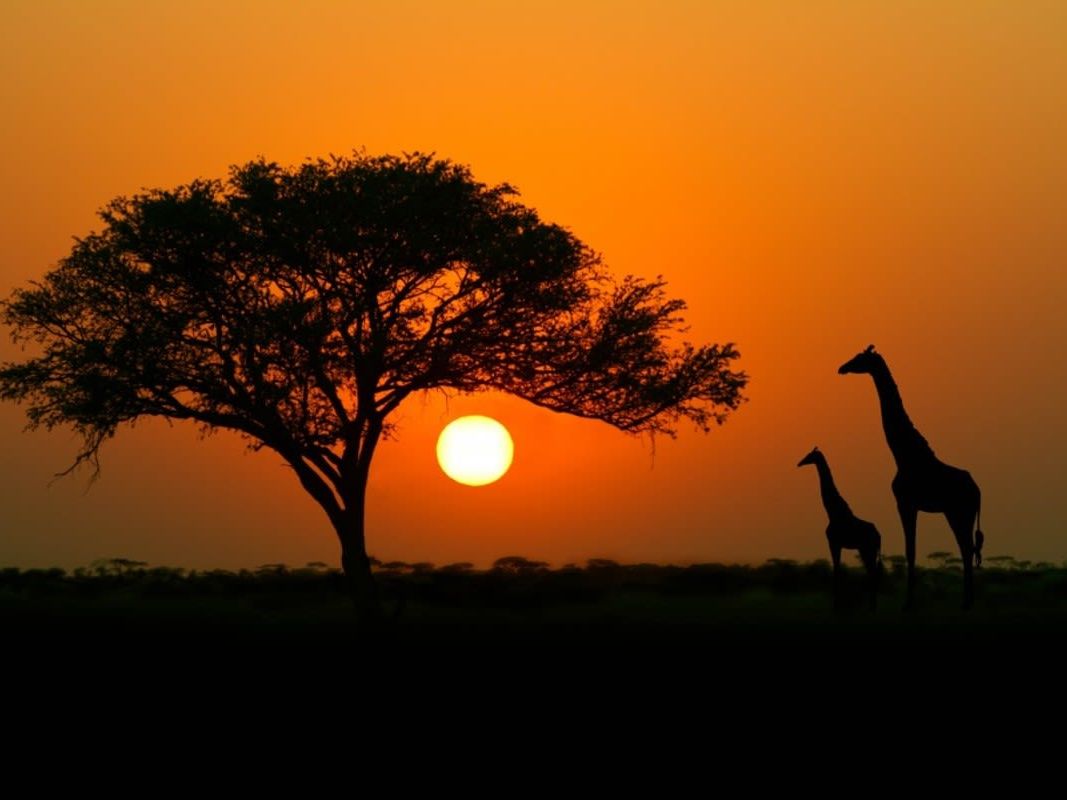

- Game Drive: Game Drives in the Serengeti National Park
- Activities: Hot Air Balloon safari over the Serengeti
- Accommodation: Serengeti Nyikani Migration Camp - Tented Room
- Meals: B, L, D
Game Drives in the Serengeti National Park
Morning and afternoon game drives in and over the vast plains of the Serengeti. Serengeti National Park is a World Heritage Site teeming with wildlife: over 2 million ungulates, 4000 lions, 1000 leopard, 550 cheetahs and some 500 bird species inhabit an area close to 15,000 square kilometers in size. Dotted with trees and kopjes from which majestic lions control their kingdom; gaze upon the Great Migration in awe or find an elusive leopard in a riverine forest. The biological diversity of the park is very high with at least four globally threatened or endangered animal species: black rhinoceros, elephant, wild dog, and cheetah.
Serengeti National Park is at the heart the larger Serengeti ecosystem, which is defined by the area covered by the annual migration. The property is contiguous with Ngorongoro Conservation Unit, an area of 528,000ha declared a World Heritage Site in 1979. The entire ecosystem also includes the Maswa Game Reserve in the south, Ikorongo Game Reserves in the east, Maasai Mara National Reserve in Kenya (1,672km2) to the north, and Loliondo Game Controlled Area in the west. This entire ecosystem is intact and no barriers hamper the migration. Serengeti National Park is sufficiently large and intact to ensure the survival and vigour of all the species contained therein, if maintained in its present state but does not, by itself, ensure the protection of the entire ecosystem.
Hot Air Balloon safari over the Serengeti
In the crisp air of dawn, the passengers watch the crew partially inflates the balloon with enormous fans before the gas burners are ignited to fill the balloon with hot air. The crew directs clients how to get into the basket moments before take-off. The balloons lift off just before sunrise when the breeze on the plains is still cold. Once airborne, the balloon is blown by the prevailing winds across the broad landscape. Apart from the hiss of the burners, the flight above the plains is magically silent. The pilot controls the height of the craft by regulating the flow of hot air into the balloon. Sometimes the balloon will descend over the plains for a close up view of the wildlife; on other occasions, it rises to clear a tree canopy and rise over the riverine forest. This is an experience never to be forgotten. Enjoy the rest of the day on safari exploring this amazing park.
*** A hot air balloon safari over the Serengeti is available on request - not included in the tour cost
Day 11: Enjoy two scenic flights over the Serengeti and Masai Mara with excellent aerial game viewing. Lunch at the lodge, and go on an afternoon game drive

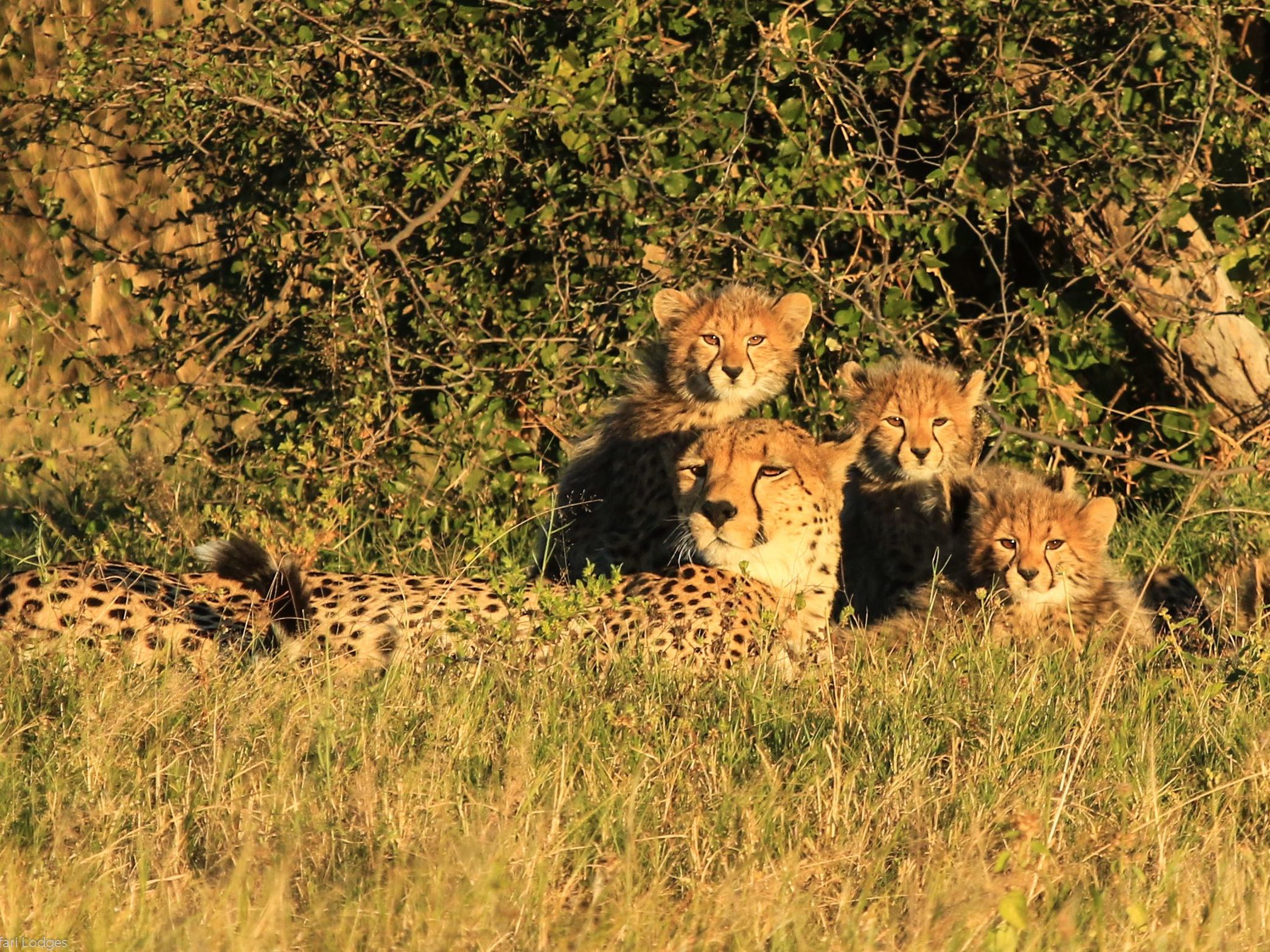
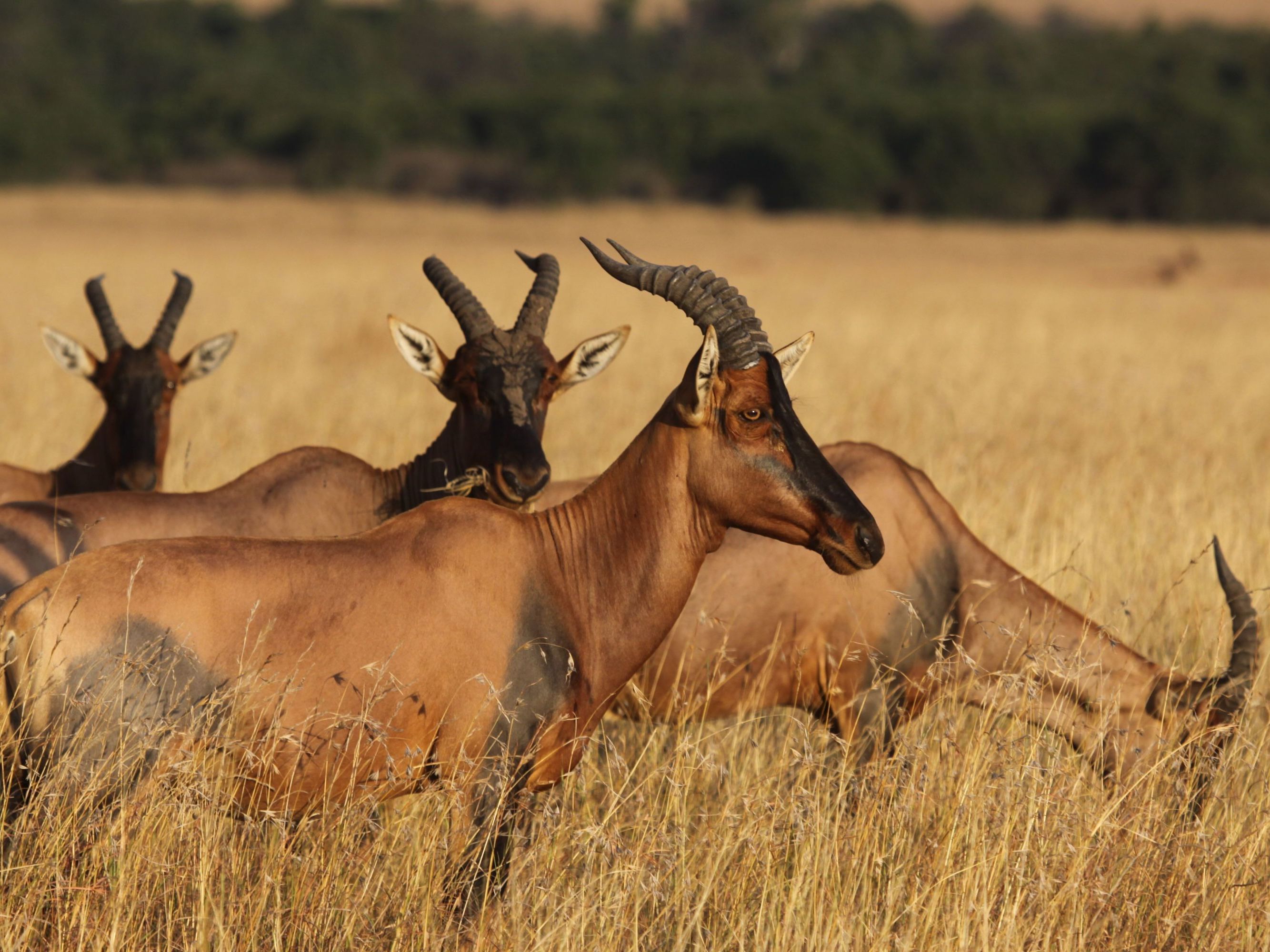
- Activities: Travel from the Serengeti to Masai Mara
- Activities: Masai Mara
- Accommodation: Ashnil Mara Camp - Standard Tent
- Meals: B, L, D
*** Regional air scheduled flight to Tarime depart at 09:15am and arrive 1015am. Short road transfer to Isebania border and then continue to Migori for the connecting flight on Air Kenya to Masai Mara - depart 11:35am and arrive 12:40pm (flights included)
Travel from the Serengeti to Masai Mara
Masai Mara
Rolling hills, sprawling savannahs, dramatic river crossings and of course... more wildlife and adventure than any movie could ever portray. Welcome to the Masai Mara, home to the lions of ‘Big Cat Diary’, temporary residence of the ‘Great Migration’, mighty Maasai warriors and some of the most luxurious safari lodges on earth.
The Masai Mara features a stunning kaleidoscope of wild and rugged landscapes, warm and welcoming people and an exciting array of creatures – big and small. World famous for hosting the epic Great Migration, the Masai Mara welcomes 1,5 million wildebeests onto its sprawling savannahs each July through October. The Masai Mara National Reserve and conservancies are brimming with life and offer safari travelers a wide variety of activities to choose from. Whether you take to the skies for a high-flying hot-air balloon adventure at sunrise or hit the road for a 4x4 safari, you’re sure to leave the Masai Mara with unforgettable experiences and lifelong memories.
Days 12 - 14: Morning and afternoon game drive in the Masai Mara exploring its vast plains
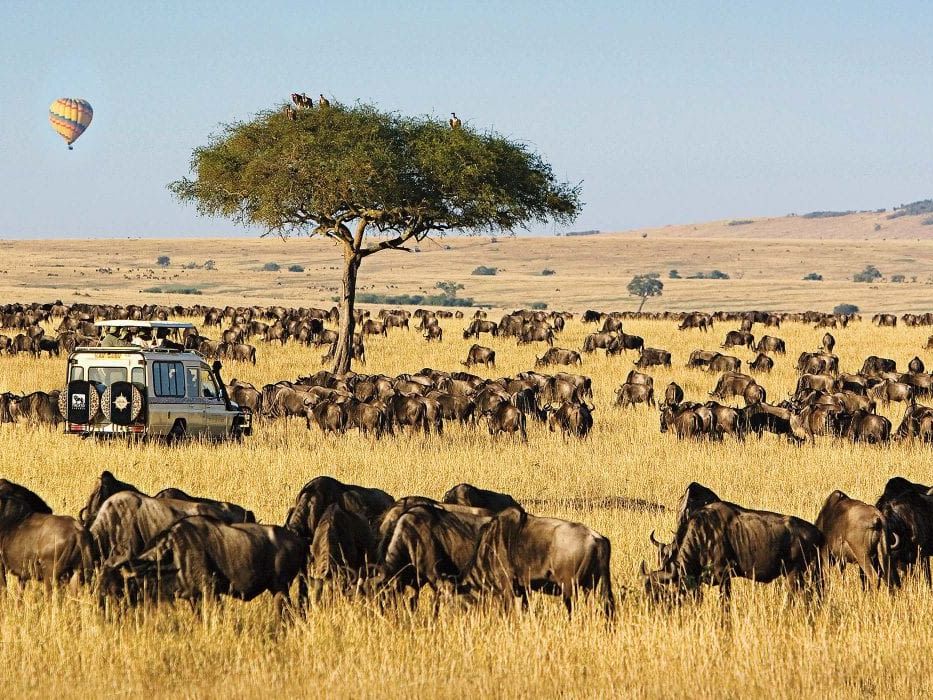

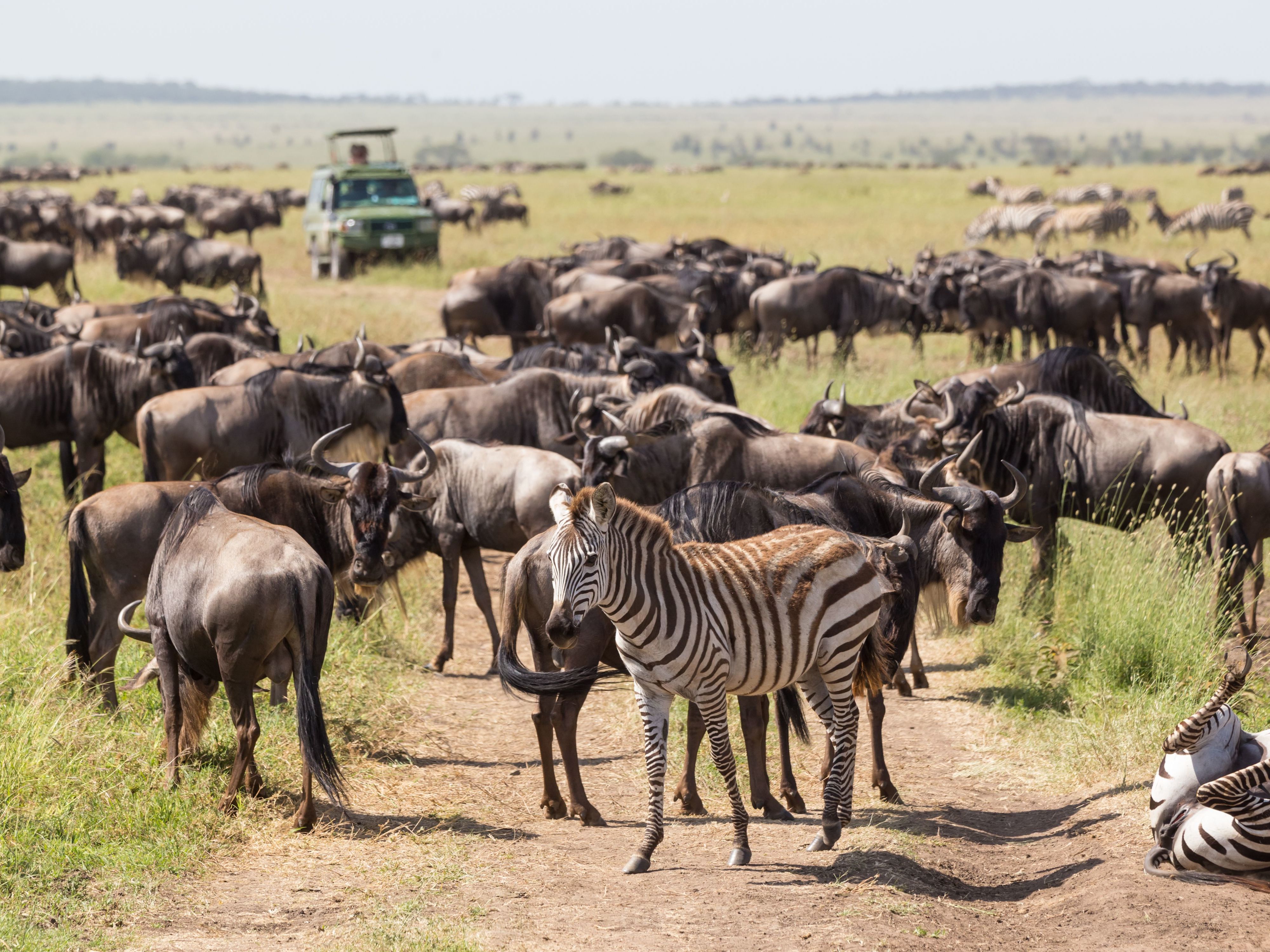

- Game Drive: Game Drives in the Masai Mara
- Accommodation: Ashnil Mara Camp - Standard Tent
- Meals: B, L, D
Game Drives in the Masai Mara
Enjoy morning and afternoon game drives in a customized 4x4 safari vehicle with an experienced and professional driver-guide. After sundowners in the bush, guests will get to experience a night drive on the way back to the lodge, allowing guests the opportunity to see the nocturnal animals not encountered during the day.
Masai Mara Game Reserve is a renowned park that offers wonderful wildlife viewing throughout the year. The Masai Mara plains are commonly dominated by an incredible variety of mammals. From large herds of herbivores like wildebeest, zebra and Thompson’s gazelle to the famous “Big Five” - it is estimated there are around 1,000 lions in the Masai Mara.
In the Mara River you will find hippo that submerge at the approach of a vehicle, only to surface seconds later to snort and grumble their displeasure. It is also home to the Nile crocodile, the continent’s largest reptile. On several occasions you will spot drowsy crocodiles sunbathing on the riverbanks, mouths agape, waiting for prey at which to strike with lightning swiftness. The region also provides habitat for a variety of birds with over 450 species having been recorded.
Day 15: Fly late morning to Nairobi, and enjoy the use of a dayroom to freshen up before your flight back home

- Internal Flights: Internal Flight from Masai Mara to Nairobi
- Activities: Dayroom Four Points Sheraton Airport hotel
- Land Transfers: Private transfer to the Airport
- International Flights: Departure flight from JKIA Nairobi Airport
- Meals: B, L
*** Air Kenya scheduled flight to Nairobi - depart 11:5am and arrive 13:00pm (flight included)
Internal Flight from Masai Mara to Nairobi
Dayroom Four Points Sheraton Airport hotel
On arrival in Nairobi, enjoy a transfer to the Four Points Sheraton Airport hotel where you will have the use of a dayroom until it is time for your final transfer to the Airport for your flight.
Private transfer to the Airport
Departure flight from JKIA Nairobi Airport
Bid farewell to Africa, for now until your next Safari !
Accommodation




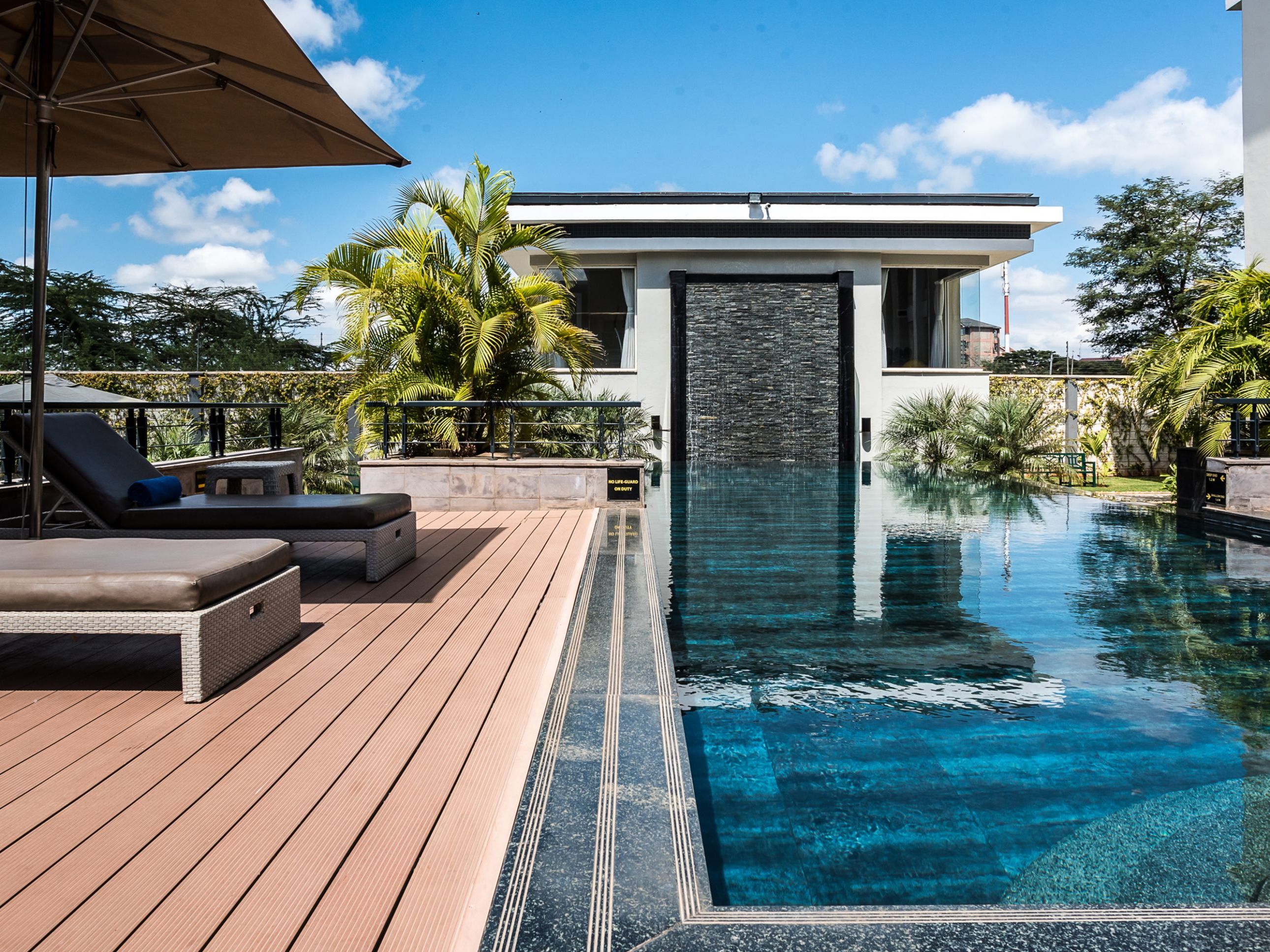
Eka Hotel
Nairobi, Kenya
Room Type: Superior Room
Dates: Aug 1, 2026 - Aug 2, 2026
The Eka Hotel is ideally located along Mombasa Road in Nairobi, the bustling capital city of Kenya. The property is ideally situated just minutes away from the Jomo Kenyatta International Airport and the Wilson Airport. With convenient access to all of the city's most popular tourist attractions, such as Nairobi National Park, Karen Blixen Museum, National Museum and the Giraffe Center, this hotel is a great base from which to explore.
The Eka Hotel Nairobi features 167 well-appointed rooms, five meeting & conference rooms, restaurant & bar, gym, swimming pool, gift shop, wellness center among other top facilities offering the best choice venue for your business and leisure stay. The guest rooms offer the very best in comfort, accessibility and efficiency. Each air-conditioned room is equipped with a flat screen TV, complimentary internet access, safety box and mini bar.

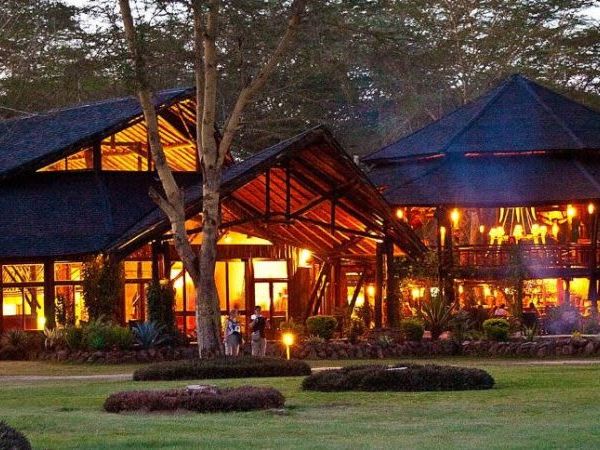

Ol Tukai Lodge
Amboseli National Park, Kenya
Room Type: Standard Room
Dates: Aug 3, 2026
Ol Tukai Lodge shares in the rich cultural history of Amboseli involving The Maasai Community, The Colonial Government and The Early European explorers. The culmination of all these defines our hospitality offering of authentic African Safari experience and culture. The lodge opened its doors in 1996, on the original setup for the film crew who shot Snow at Kilimanjaro in 1948 starring Gregory Peck, Susan Hayward and Ava Gardner – an adaptation of The Snows of Kilimanjaro and Other Stories, a compendium of short stories authored by Ernest Hemingway that was published in 1961. The lodge is strategically located at the heart of Amboseli National Park. As such, it is designed to take advantage of its scenic environment; Mt. Kilimanjaro and the abundant wildlife of Amboseli, making it a world-renowned spot to observe African Elephants. We started out by offering unique Safari experiences to leisure travelers but we have since expanded our services to the corporate world. The beautifully appointed rooms provide comfort and a calming effect of home. The African artifacts and the wildlife decor have been painstakingly handcrafted with great attention to detail.
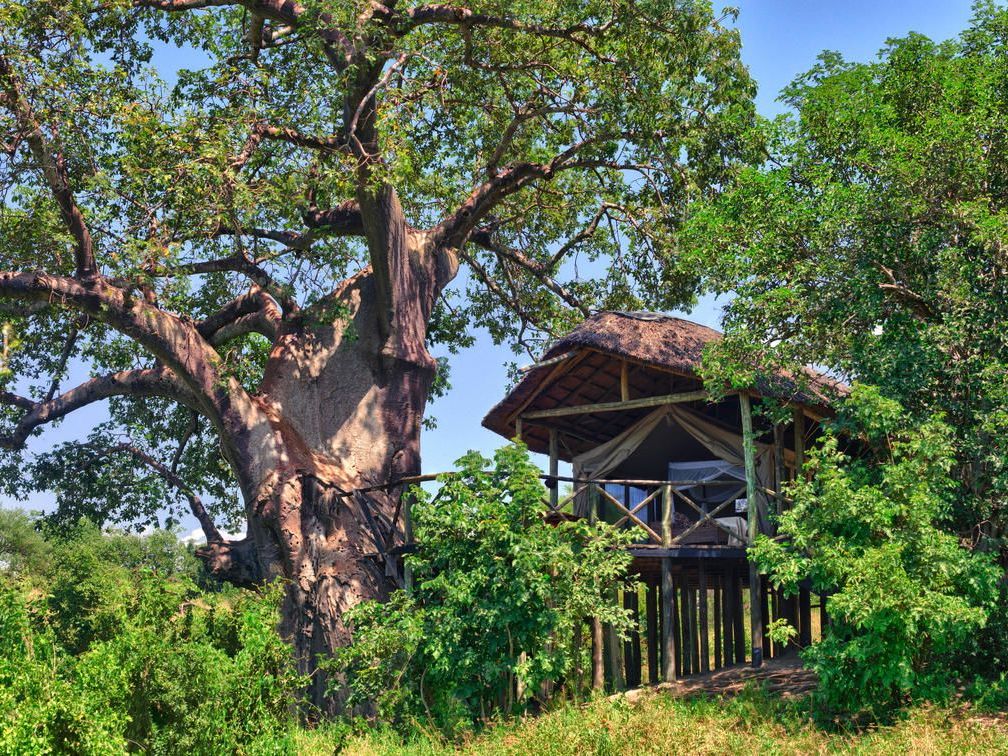
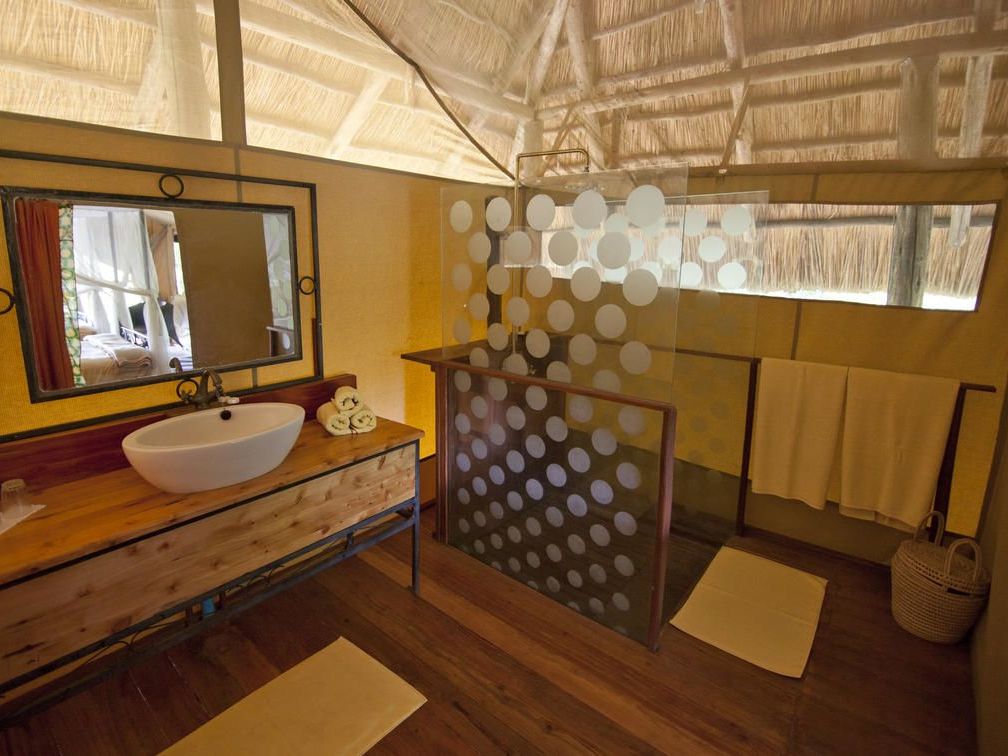

Tarangire Mbali Mbali Camp
Tarangire, Tanzania
Room Type: Safari Tent
Dates: Aug 4, 2026 - Aug 5, 2026
Mbali Mbali Tarangire River Camp is set within 25,000 hectares of concession area, included on the land is a branch of the Tarangire River itself, which the camp overlooks. The property is in a great location for game viewing since it is only 1.2miles from the main entrance to Tarangire National Park. Traditional grass thatching adorns the roof of the main lodge structure, which is set off the ground on an elevated deck. The breezy lounge boasts ample seating in a relaxing open-air environment. The dining area, where culturally inspiring meals are served, consists of simple safari style seating and the elevated position allows for excellent views over the riverbank below. Both the dining and lounge areas are married into a proper bon-fire area and game viewing deck that also overlook the same stunning views. The lodge’s small, informal gift shop offers the families of the nearby Maasai villages a chance to sell some of their handmade wares.
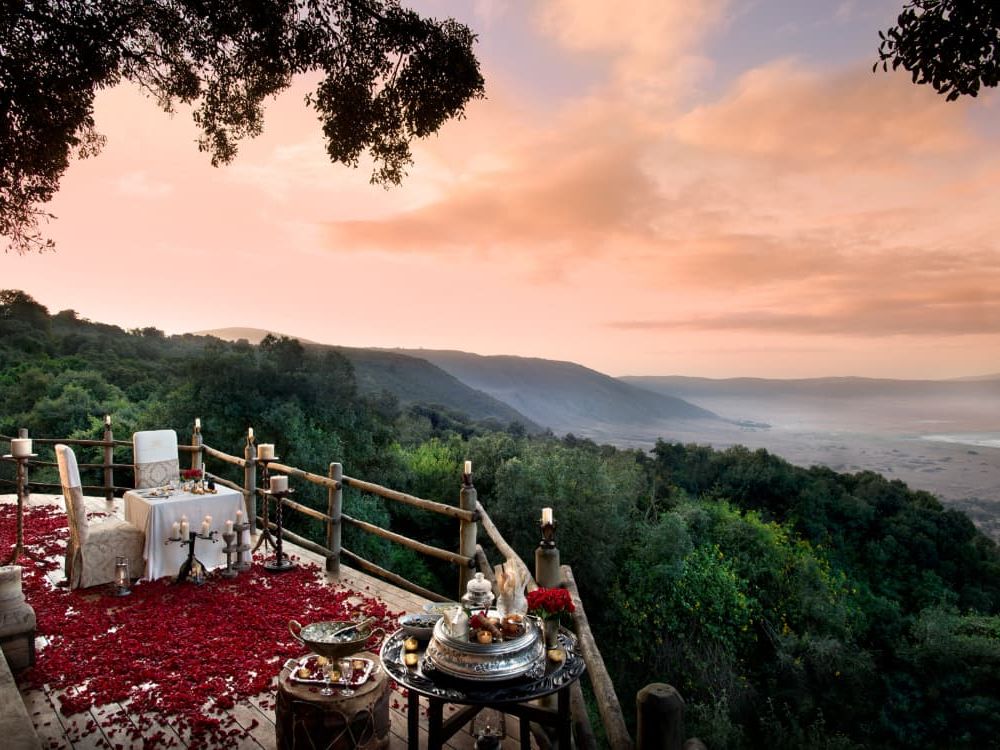
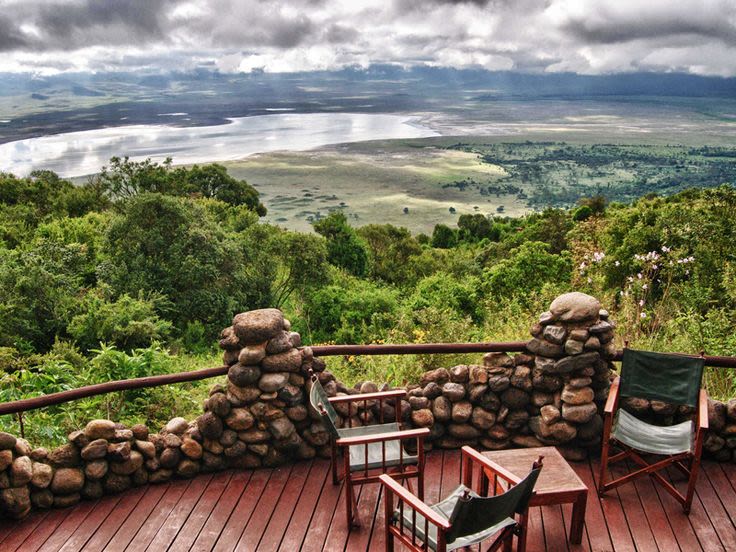
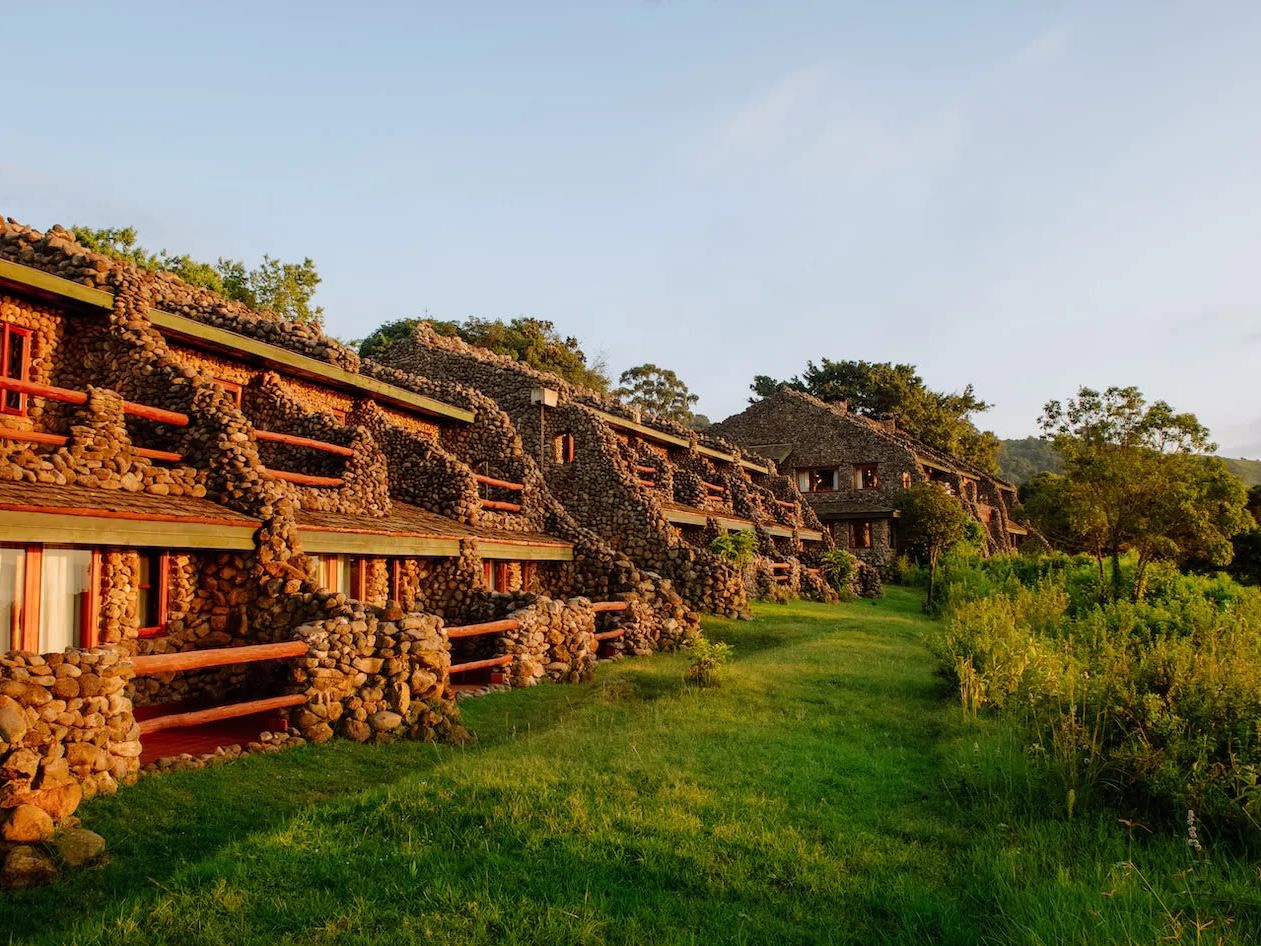
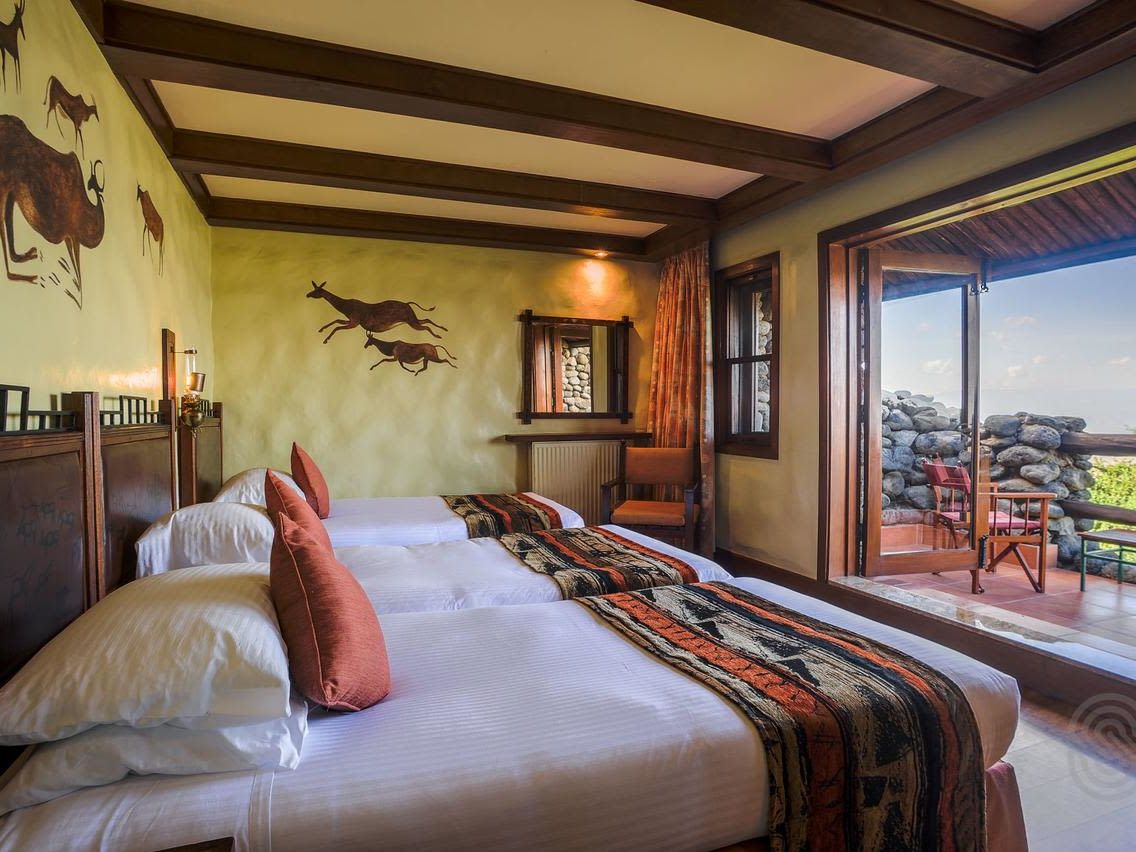
Ngorongoro Serena Lodge
Room Type: Standard Room
Dates: Aug 6, 2026 - Aug 7, 2026
Tanzania’s prehistoric Ngorongoro Crater, a UNESCO World Heritage Site known as the Eighth Wonder of the World, has yawned heavenward for millennia. Deep within its immense walls is a breath-taking blue-green landscape dotted with plains, lakes and forests; an eerie, otherworldly “land that time forgot” thick with massive bull elephants, rhinos, wildebeests and the highest concentration of lions in Africa. Nestled high above the plains into the Crater’s jagged rim, cloaked in river stone and indigenous vines, Ngorongoro Serena Safari Lodge is barely visible to the naked eye. Framed by arched stone passages and timbered decks, its torch-lit walls are adorned with stylized cave paintings. At the stone heart of the lodge burns a glowing fire, which is kept constantly alight. Rooms are looped around the Crater rim. Each has its own rock-enclosed balcony, and all enjoy completely uninterrupted views of the volcanic amphitheatre far below. Our Ngorongoro hotel lodge is a place that feels as ancient as the Crater itself, yet no modern comfort has been spared in an effort to bring you the best safari adventure in Africa and one of the most unique travel experiences in the world. Explore the Cradle of Mankind at Ngorongoro Serena Safari Lodge.
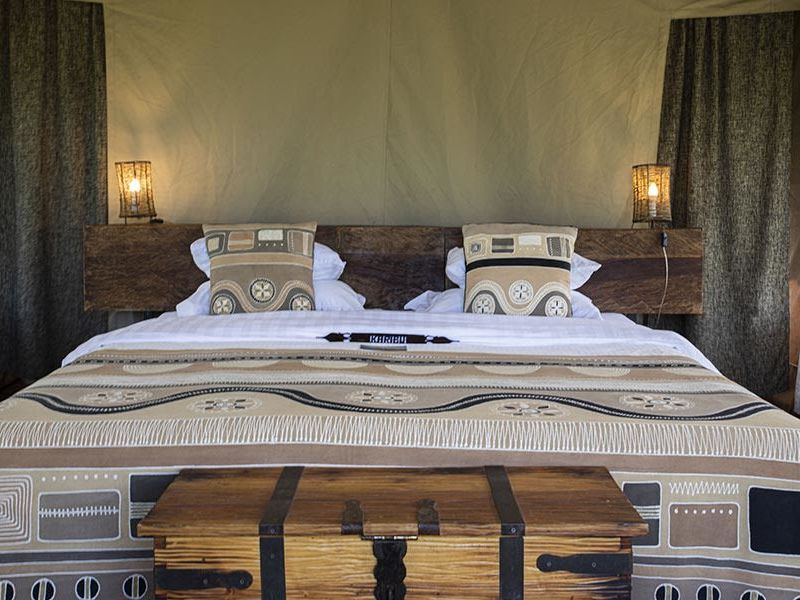
Serengeti Nyikani Migration Camp
Room Type: Tented Room
Dates: Aug 8, 2026 - Aug 10, 2026
Nyikani migration camps located in the Serengeti ecosystem, moves twice a year to ensure its guests are very well placed to witness the Great Migration of wildebeest and zebra. From December through March, the migration moves in and out of the Ndutu area. Ndutu is located in Ngorongoro Conservation Area, just south of Serengeti National Park. Nyikani migration camp location provides easy access to prime game viewing areas around Lakes Ndutu and Masek. In addition to the almost two million wildebeest and zebra that move through the area each year, Ndutu is home to cheetah, lion, giraffe and hundreds of bird species. During February’s calving season, the wildebeest give birth to 8,000 babies a day.
From late May through October, The Camp is located in Northern Serengeti. The camp is close to the Mara River, allowing easy access to several river crossing points in the area. During this time of year, the wildebeest migration is crossing the Mara River back and forth from Tanzania to Kenya. River crossings are common with crocodiles, hippos and large cats scattered throughout the area. The camp has 12 tents in king, twin, triple or family configuration and 1 family tent. All tented rooms have an ensuite bathroom, flush toilet, double wash basins with running water, safari-style bucket shower and other essential amenities, including the service of a butler. Furthermore, a shaded verandah overlooks the Serengeti plains, and lastly there is a power point with universal adapter, writing desk and a digital safe.




Ashnil Mara Camp
Masai Mara, Kenya
Room Type: Standard Tent
Dates: Aug 11, 2026 - Aug 14, 2026
Ashnil Mara Camp is located in the Maasai Mara National Reserve, close by to the Mara River. This region, famous for the great wildebeest migration sightings, is the perfect home base for an unforgettable safari experience. The camp boasts 50 luxury tents, which overlook the beautiful massive plains of the Maasai Mara. The tents include luxury ensuite bathrooms, walk in closets and a sun deck, perfect for relaxing and watching the game go about their daily habits. Facilities at the camp include a restaurant, lounge bar, clinic/infirmary, swimming pool and a souvenir shop.
Cost Include
Airport transfers on private basis
Transport for safari sector in a 4x4 vehicles
Services of experienced English-speaking driver-guides
Game drives and activities as specified in the itinerary
All accommodation and meals as specified
All park fees and government taxes
Filtered water will be provided in our safari vehicles
Internal flights as specified in the itinerary inclusive of all airport taxes
Cost Exclude
International flights
Passport and visa fees
Hot air balloon safaris
Driver-guide gratuities, dining rooms tips and porterage
Personal travel, baggage and medical insurance
Drinks & Laundry (except where specified)
Telephone bills and any items of a personal nature

78060 Calle Estado Suite 7,
La Quinta, CA 92253
P 800.409.7755 | F 818.459.6999
info@greatsafaris.com| www.greatsafaris.com
CST# 2163276-50
THANK YOU FOR TRAVELING WITH GREAT SAFARIS